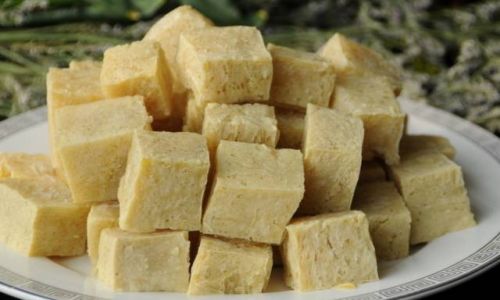Table of content
Orange peels, often discarded without a second thought, are a treasure trove of nutritional and culinary potential. Rich in fiber, vitamins, and antioxidants, they offer a range of health benefits when incorporated into diets or homemade remedies. However, consuming fresh orange peels directly can be challenging due to their bitter taste and tough texture. Drying them not only mitigates these issues but also preserves their nutrients for extended use. The critical question, however, remains: how long should orange peels be dried to ensure they are safe, flavorful, and ready for consumption? This article delves into the science, methods, and practical tips for drying orange peels effectively, ensuring you harness their full potential.
The Science Behind Drying Orange Peels
Drying is a preservation method that removes moisture from food, inhibiting bacterial growth and enzymatic activity. For orange peels, this process transforms their texture, mellows their bitterness, and concentrates their flavors. The duration of drying depends on several factors, including humidity, temperature, and the method employed. Achieving the right balance is essential—under-dried peels may retain moisture, leading to spoilage, while over-drying can result in brittle, tasteless remains.
Methods of Drying Orange Peels
Sun-Drying: The Traditional Approach
Sun-drying is the oldest and most cost-effective method, relying solely on natural heat and airflow. While ideal for warm, arid climates, it requires patience and vigilance.
-
Process:

- Wash organic oranges thoroughly to remove pesticides or wax.
- Peel the oranges, avoiding the bitter white pith.
- Slice the peels into thin strips (5mm thickness) to expedite drying.
- Spread them on a clean cloth or baking tray in a sunny spot.
- Cover with a mesh net to protect from insects and debris.
-
Duration:
- In regions with low humidity and consistent sunlight (e.g., deserts), peels may dry in 3–5 days.
- In humid areas, this can extend to 7–10 days, with occasional flipping to ensure even drying.
-
Indicators of Readiness:
- Peels should feel leathery yet pliable, with no moisture spots.
- Bend a strip—it should crack slightly without snapping.
Oven-Drying: Speed and Control
For those seeking faster results, ovens provide a controlled environment, though they consume more energy.
-
Process:
- Preheat the oven to its lowest setting (ideally 175–200°F or 80–93°C).
- Prepare peels as described above and arrange them on a baking sheet.
- Leave the oven door slightly ajar to allow moisture escape.
-
Duration:
- Thin strips may dry in 2–3 hours, but thicker peels require 4–5 hours.
- Check every 30 minutes to prevent burning.
-
Indicators of Readiness:
- Peels should snap cleanly when bent.
- Color transitions from vibrant orange to a muted, matte hue.
Food Dehydrator: Precision Engineering
Dehydrators offer uniform heat and airflow, making them ideal for consistent results.
-
Process:
- Set the dehydrator to 135°F (57°C)—a temperature that preserves nutrients while eliminating microbes.
- Arrange peels in a single layer on trays.
-
Duration:
- Thin strips typically dry in 6–8 hours.
- Thicker peels may need 10–12 hours.
-
Advantages:
- Retains more vitamins compared to oven-drying.
- Minimal risk of overheating.
Microwave Drying: The Quick Fix
While not recommended for large batches, microwaves can dry small quantities rapidly.
-
Process:
- Place peels on a microwave-safe plate.
- Use short bursts (30 seconds) on high power, flipping between intervals.
-
Duration:
- Completes in 3–5 minutes, but requires constant monitoring.
-
Caveat:

Prone to uneven drying and potential scorching.
Factors Influencing Drying Time
- Humidity: High moisture in the air slows evaporation, extending drying times.
- Peel Thickness: Thicker strips take longer to dehydrate.
- Airflow: Poor ventilation traps moisture, delaying the process.
- Orange Variety: Thicker-skinned varieties (e.g., Valencia) may require more time than thin-skinned ones (e.g., Mandarins).
How to Test for Doneness
- Texture Test: Dried peels should crack when bent but not crumble into dust.
- Taste Test: Sample a strip—bitterness should be mild, with a concentrated citrus flavor.
- Weight Check: Dried peels feel significantly lighter than fresh ones.
Storing Dried Orange Peels
Proper storage ensures longevity and flavor retention:
- Containers: Use airtight glass jars or resealable bags.
- Location: Store in a cool, dark place (e.g., pantry) away from sunlight.
- Shelf Life: Properly dried peels last 6–12 months.
Culinary and Health Applications
Dried orange peels are incredibly versatile:
- Tea Infusions: Steep 1 teaspoon of peels in hot water for a vitamin C-rich beverage.
- Baking: Grind into powder for cakes, cookies, or glazes.
- Marinades: Add zest to rubs for meats or vegetables.
- Homemade Cleaners: Mix with vinegar for a natural surface disinfectant.
Health Benefits of Dried Orange Peels
- Digestive Aid: High fiber content promotes gut health.
- Immune Support: Rich in vitamin C and antioxidants.
- Anti-Inflammatory: Compounds like hesperidin reduce inflammation.
- Skin Health: Topical applications may alleviate acne or dryness.
Safety Precautions
-
Organic vs. Conventional Oranges:
Non-organic peels may harbor pesticide residues. Opt for organic or scrub thoroughly with a vegetable brush.
-
Mold Prevention:
Ensure peels are completely dry before storage. Discard any with fuzzy spots.
-
Allergies:
Individuals with citrus allergies should avoid consumption.
Common Mistakes to Avoid
- Overcrowding: Peels should not touch during drying to prevent mold.
- Ignoring Weather: Sun-drying in rainy seasons guarantees spoilage.
- Skipping Washing: Even organic oranges may have dust or bacteria on their skins.
Conclusion
The ideal drying time for orange peels hinges on method and environmental conditions. Sun-drying offers a traditional touch but demands patience, while ovens and dehydrators provide speed and reliability. Regardless of the approach, the end goal remains consistent: transforming a discarded byproduct into a culinary and wellness ally. By adhering to proper techniques and safety guidelines, you can enjoy the zesty rewards of dried orange peels in teas, dishes, and remedies year-round. So next time you peel an orange, remember—the rind is not waste, but a resource waiting to be revitalized.
Word Count: 1,650+
This article provides a thorough exploration of drying orange peels, balancing practical advice with scientific insight to empower readers to utilize this often-overlooked ingredient safely and creatively.





0 comments